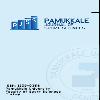Investigation of Joint Reaction Forces and Moments During the Countermovement and Squat Jump
The purpose of the study is to determine the force and the moments (torques) using the inverse dynamic modelling acting on the joints during countermovement (CMJ) and squat jump (SJ) by using link segment modelling. An elite male volleyball player participated in this study (Height = 1.85 m, Weight = 80 kg). One high-speed cameras operating at 500 frames per second were used to record the player’s countermovement and squat jumping (Basler A 602f high speed camera). Captured views were digitized in the SIMI Motion 7.3 (SIMI Reality Motion Systems GmbH-Germany) by tracking 9 anthropometrical markers. Displacement data were filtered with 4th order 8Hz low pass Butterworth filter. Segment’s centre of gravity was computed linear velocity and accelerations. Angles were calculated and it used to compute angular velocity and accelerations. Joint reaction forces and moments were computed by applying the inverse dynamic analysis into the calculated kinematic values. As result; the height of jump was higher in CMJ than SJ whereas resultant ground reaction force (GRF) was slightly higher in SJ compared to CMJ (SJ: 1749.8 N, CMJ: 1710.3 N). Furthermore, there were two different GRF peaks during CMJ and SJ. These peaks were occurred due to the backward movement of trunk, upper arm, lower arm and head during from descent to ascent. Meanwhile shank and thigh were moving the downward. In other words, it was observed a preparation phase between the descent phase (or stage or state) and ascent phase both jumps (at CMJ and SJ). Calculated moments in the CMJ jumping were higher than the SJ.
Keywords:
Joint reaction force, Moment (Torque), Inverse dynamic analysis,
___
- Bobbert, M.F., Gerritsen, K.G.M., Litjens, M.C.A., Van Soest, A.J. (1996). Why is countermovement jump height greater than squat jump height? Medicine and Science in Sports and Exercise, 28(11), 1402-1412.
- Chandler, R. F., Clauser, C. E., McConville, J. T., Reynolds, H. M., Young, J. W. (1975). Investigation of inertial properties of the human body. AMRL Technical Report. Dayton, OH: Wright-Patterson Air Force Base.74-137.
- Enoka, R.M. (1988). Neuromechanical basis of kinesiology. Champaign, IL: Human Kinetics.
- Feltner, M.E., Elijah, J.B., Cassandra, M.P. (2004). Segmental and kinetic contributions in vertical jumps performed with and without an arm swing. Research Quarterly for Exercise and Sport, 75(3), 216-230.
- Feltner, M.E., Fraschetti, D.J., Crisp R.J. (1999). Upper extremity augmentation of lower extremity kinetics during countermovement vertical jumps. Journal of Sports Science, 17, 449-466.
- Fukashiro, S., Komi, P.V. (1987). Joint moment and mechanical power flow of the lower limb during vertical jump. International Journal of Sports Medicine, 8(Suppl.1), 15-21.
- Harbili, E., Arıtan S. (2006). Koparma tekniğinin biyomekaniği. Spor Bilimleri Dergisi, 17(3), 124-142.
- Harman, E.A., Rosenstein, M.T., Frykman, P.N., Rosenstein, R.M. (1990). The effects of arms and countermovement on vertical jumping. Medicine and Science in Sports and Exercise, 22, 825-833.
- Rızaoğlu, E., Sünel, N. (2002). Klasik mekanik. Ankara: Ankara Ofset.
- Spagele, T., Kistner, A., Gollhofer, A. (1999a). A multi-phase optimal control technique for the simulation of a human vertical jump. Journal of Biomechanics. 32, 87-91.
- Spagele, T., Kistner, A., Gollhofer, A. (1999b). Modelling, simulation and optimization of a human vertical jump. Journal of Biomechanics, 32, 521-530.
- Vanezis, V., Lees, A. (2005). A biomechanical analysis of good and poor performers of the vertical jump. Ergonomics, 48(11), 1594-1603.
- Vanrenterghem, J., Lees, A., Lenoir, M., Aerts, P., De Clercq, D. (2004). Performing the vertical jump: Movement adaptations for submaximal jumping. Human Movement Science, 22, 713-727.
- Winter, D. (2005). Biomechanics and motor control of human movement. New Jersey: John Wiley & Sons.
- Yeadon, M. R., Morlock, M. (1989). The appropriate use of regression equations for the estimation of segmental inertia parameters. Journal of Biomechanics, 22(6/7), 683-689.
- Yayın Aralığı: 3
- Yayıncı: Pamukkale Üniversitesi Spor Bilimleri Fakültesi
